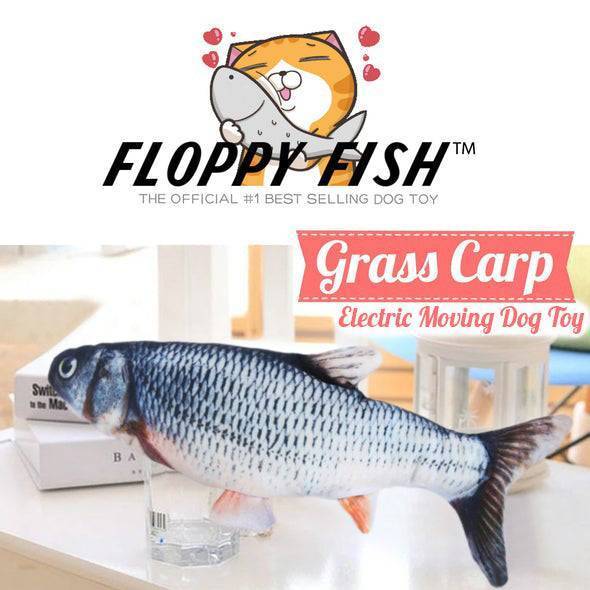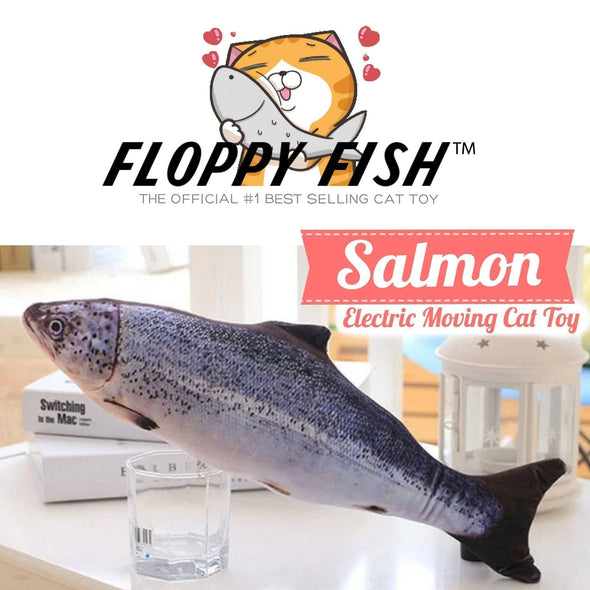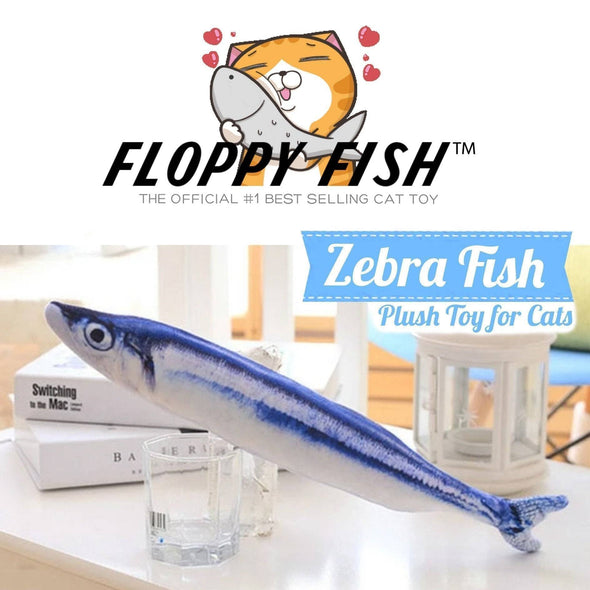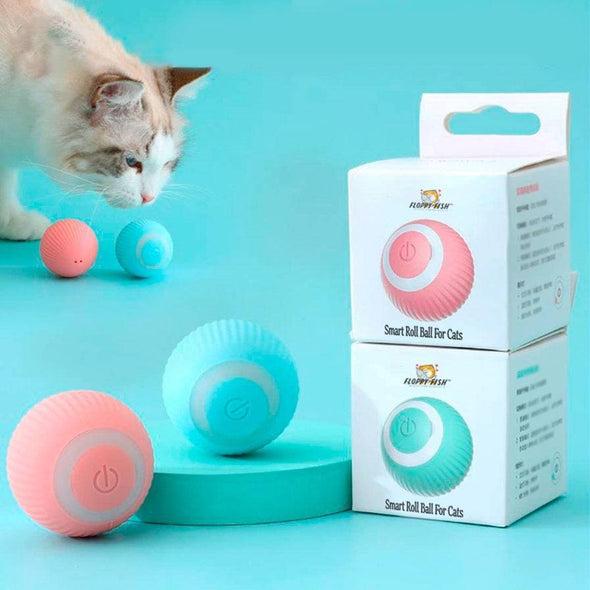Interactive Dog Toys That Move: Complete Guide to Motion-Activated Pet Entertainment
Dog owners everywhere are discovering a game-changing solution to their pet's boredom: motion-activated toys that respond to your dog's natural hunting instincts. Unlike traditional static toys, these innovative interactive dog toys that move create dynamic experiences that keep dogs engaged for hours, providing both mental stimulation and physical exercise.

Why Do Dogs Need Moving Toys?
Dogs are naturally wired to chase, hunt, and interact with moving objects. This instinct dates back thousands of years to their wild ancestors. Static toys often lose their appeal within minutes, but motion sensor dog toys that move and respond create an ongoing challenge that satisfies your dog's primal needs.
When dogs don't get enough mental stimulation, they often develop destructive behaviors like excessive barking, chewing furniture, or digging. Motion-activated dog toys provide a healthy outlet for this energy while keeping your furry friend entertained even when you're not home.
What Makes Motion-Activated Dog Toys So Effective?
The secret lies in unpredictable movement patterns that trigger your dog's prey drive. These toys use sensors to detect when your pet approaches, then spring into action with realistic flopping, wiggling, or vibrating motions that mimic live prey.
Unlike battery-powered toys that move continuously until the battery dies, motion-activated toys are smart. They conserve energy by only moving when your dog shows interest, making them more sustainable and longer-lasting than traditional electronic pet toys.

How Do Motion Sensor Dog Toys Work?
Modern interactive dog toys use advanced motion detection technology to create responsive play experiences. The built-in sensors detect movement within a specific range, typically 6-12 inches, and trigger the toy's motor to create lifelike movements.
Most quality motion-activated toys feature USB rechargeable batteries that last 2-4 weeks on a single charge, depending on usage. This makes them more convenient and cost-effective than toys requiring constant battery replacements.
The realistic movements include tail swishing, body flopping, and vibrating actions that closely mimic the behavior of fish, birds, or small animals. This authenticity is what makes these interactive dog toys that move so irresistible to dogs of all ages and sizes.
Are Motion-Activated Toys Safe for All Dog Sizes?
Yes, when you choose the right size and materials for your pet. Quality motion-activated toys are designed with safety as the top priority, featuring durable fabrics that can withstand moderate chewing and clawing.
For large dogs, look for toys made with reinforced stitching and thicker plush materials. The internal motor should be well-protected to prevent access if your dog is an aggressive chewer. Always supervise initial play sessions to ensure your dog interacts appropriately with the motion sensor dog toy.
Small dogs benefit from lighter toys with gentler movements that won't intimidate them. The key is matching the toy's intensity to your dog's personality and play style.
What Problems Do Moving Dog Toys Solve?
Separation Anxiety Relief
Dogs with separation anxiety often benefit from having an interactive companion when left alone. Motion-activated toys provide comfort and distraction, helping reduce stress-related behaviors like excessive whining or destructive chewing.
Boredom Prevention
Indoor dogs, especially those in apartments or during harsh weather, need mental stimulation. These interactive dog toys that move create engaging activities that prevent the restlessness that leads to problem behaviors.
Exercise for Less Active Dogs
Senior dogs or those with mobility issues can still enjoy the mental stimulation of "hunting" without requiring intensive physical exercise. The gentle movements encourage light play while keeping their minds sharp.
Which Dog Personalities Benefit Most From Interactive Toys?
High-Energy Dogs
Breeds like Border Collies, Jack Russell Terriers, and Australian Shepherds thrive with motion-activated toys that challenge their quick reflexes and intense focus. These dogs often need multiple sessions throughout the day with interactive dog toys that move.
Anxious or Nervous Dogs
Motion-activated toys can help build confidence in timid dogs. The predictable yet engaging movements allow nervous pets to interact at their own pace, gradually building their comfort level with play.
Senior Dogs
Older dogs who may not chase balls anymore often rediscover their playful side with gentle motion-activated toys. The low-impact interaction keeps their minds active without straining aging joints. Here you can read more about why dogs like stuffed toys.

How to Choose the Right Motion-Activated Toy
Consider Your Dog's Size
- Small dogs (under 25 lbs): Choose lighter toys with gentler movements
- Medium dogs (25-60 lbs): Standard-sized toys with moderate intensity work well
- Large dogs (over 60 lbs): Look for reinforced toys designed for bigger breeds
Evaluate Chewing Habits
If your dog is a heavy chewer, prioritize toys with replaceable covers or those specifically designed for aggressive chewers. The motor should always be completely enclosed and inaccessible.
Think About Play Preferences
Dogs who love to carry toys around benefit from lightweight options, while dogs who prefer to pounce and wrestle need more robust construction.
Maintenance and Care for Motion-Activated Toys
Regular Cleaning
Most quality motion-activated toys feature removable, washable covers. Clean the fabric weekly to maintain hygiene and extend the toy's lifespan. The electronic components should never be submerged in water.
Battery Care
USB rechargeable dog toys should be charged regularly, even when not in use. This prevents battery degradation and ensures the toy is always ready for play sessions.
Storage Tips
Store electronic dog toys in a cool, dry place when not in use. Extreme temperatures can damage the internal components and reduce battery life.

Comparing Motion-Activated Toys to Traditional Options
Static Plush Toys
While traditional stuffed animals provide comfort, they lack the engagement factor of moving toys. Dogs often lose interest in static toys within days, whereas motion-activated options can provide entertainment for months or years.
Rope and Chew Toys
These toys serve a different purpose, focusing on dental health and jaw exercise. Motion-activated toys complement these by providing mental stimulation and interactive play experiences.
Ball Launchers and Fetch Toys
Automatic ball launchers require significant space and aren't suitable for all living situations. Motion-activated toys work in small apartments and provide entertainment without requiring human participation.
Health Benefits of Interactive Motion Toys
Mental Stimulation
Regular interaction with challenging toys helps prevent cognitive decline in aging dogs and keeps young minds sharp. The problem-solving aspect of "catching" moving prey exercises their brains daily.
Stress Reduction
Play releases endorphins, which naturally reduce stress and anxiety levels. Dogs who engage with interactive toys regularly often display calmer behavior overall.
Physical Activity
While not as intensive as a walk, the pouncing and chasing movements provide low-impact exercise that contributes to overall fitness.
According to the American Kennel Club, mental stimulation can be just as tiring as physical exercise for dogs, making interactive toys an excellent tool for managing your pet's energy levels throughout the day.
Safety Considerations and Best Practices
Supervision Guidelines
Always supervise your dog during initial play sessions with any new toy. Watch for signs of aggressive chewing or attempts to access the electronic components. Most dogs adapt quickly to appropriate play behavior.
Age Appropriateness
Puppies under 6 months should only use motion-activated toys under supervision, as they're still learning what's appropriate to chew. Senior dogs may need gentler movements to avoid startling them.
Replacement Scheduling
Even the most durable toys eventually wear out. Plan to replace motion-activated toys every 6-12 months with regular use, or sooner if you notice any damage to the fabric or changes in movement patterns.
Making the Most of Your Investment
Creating Play Schedules
Rotate motion-activated toys with other interactive options to prevent your dog from becoming bored with any single toy. This extends the life of each toy and maintains your pet's interest.
Combining with Training
Use motion-activated toys as rewards during training sessions. The high-value entertainment can motivate dogs to learn new commands and behaviors more quickly. Explore our ultimate guide to motion activated entertainment that keeps dog happy.
Multi-Pet Households
In homes with multiple dogs, motion-activated toys can provide individual entertainment while preventing competition over traditional toys. Each dog can interact with the toy at their own pace and comfort level.
The investment in quality motion-activated toys often pays for itself through reduced veterinary bills from stress-related conditions and damage to household items from bored, destructive pets.

Conclusion: Transform Your Dog's Daily Routine
Motion-activated dog toys represent a revolutionary approach to pet entertainment that addresses modern challenges like separation anxiety, indoor boredom, and insufficient mental stimulation. These innovative toys work around the clock to keep your furry friend engaged, happy, and mentally sharp.
Whether you have a high-energy puppy, an anxious rescue dog, or a senior pet who needs gentle encouragement to play, motion-activated toys offer customizable entertainment that adapts to your pet's unique needs and personality.
Ready to give your dog the gift of interactive entertainment? Explore our complete collection of motion-activated dog toys and discover why thousands of pet owners are making the switch to smarter, more engaging pet toys. Your dog's tail-wagging approval is just a click away!




